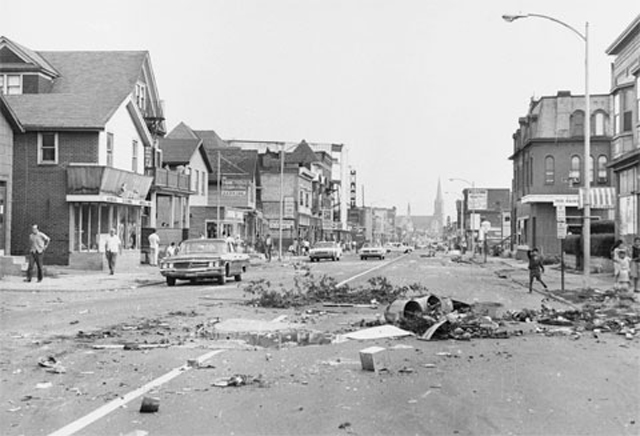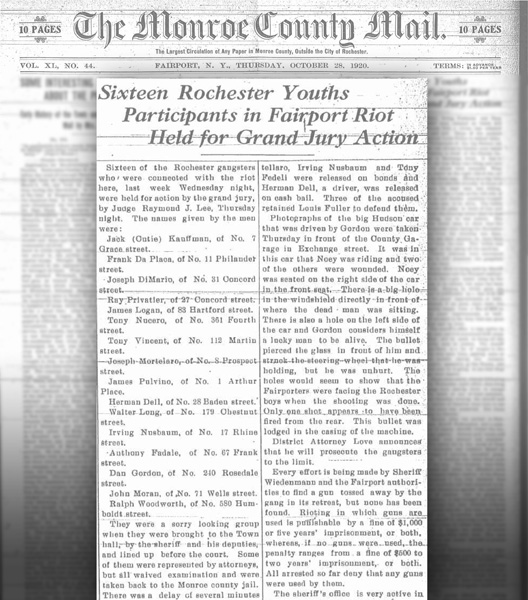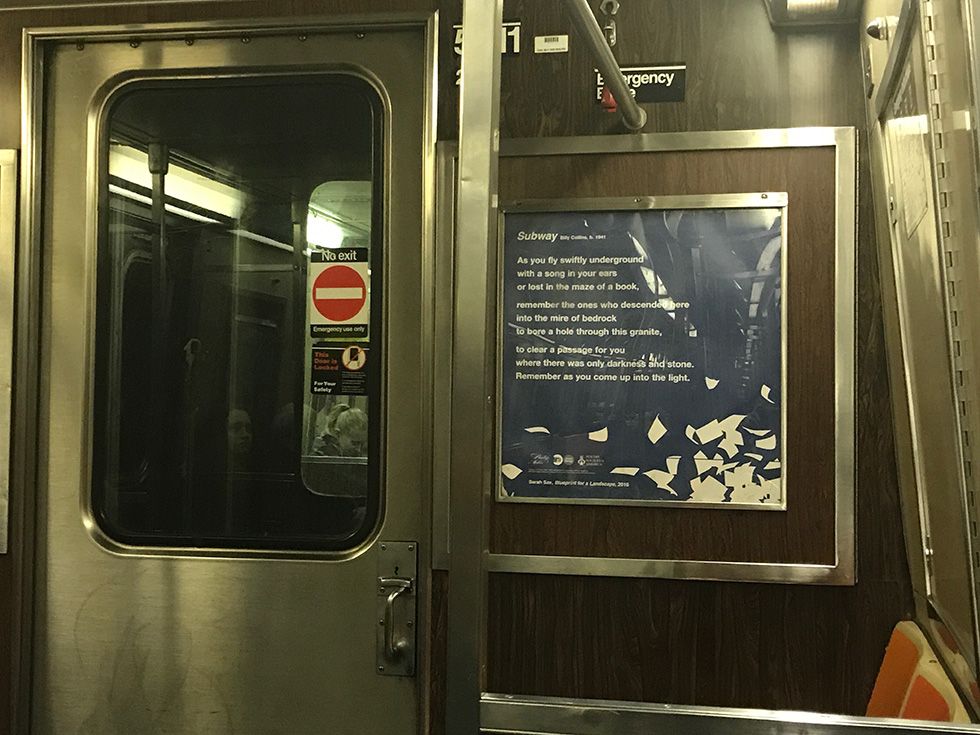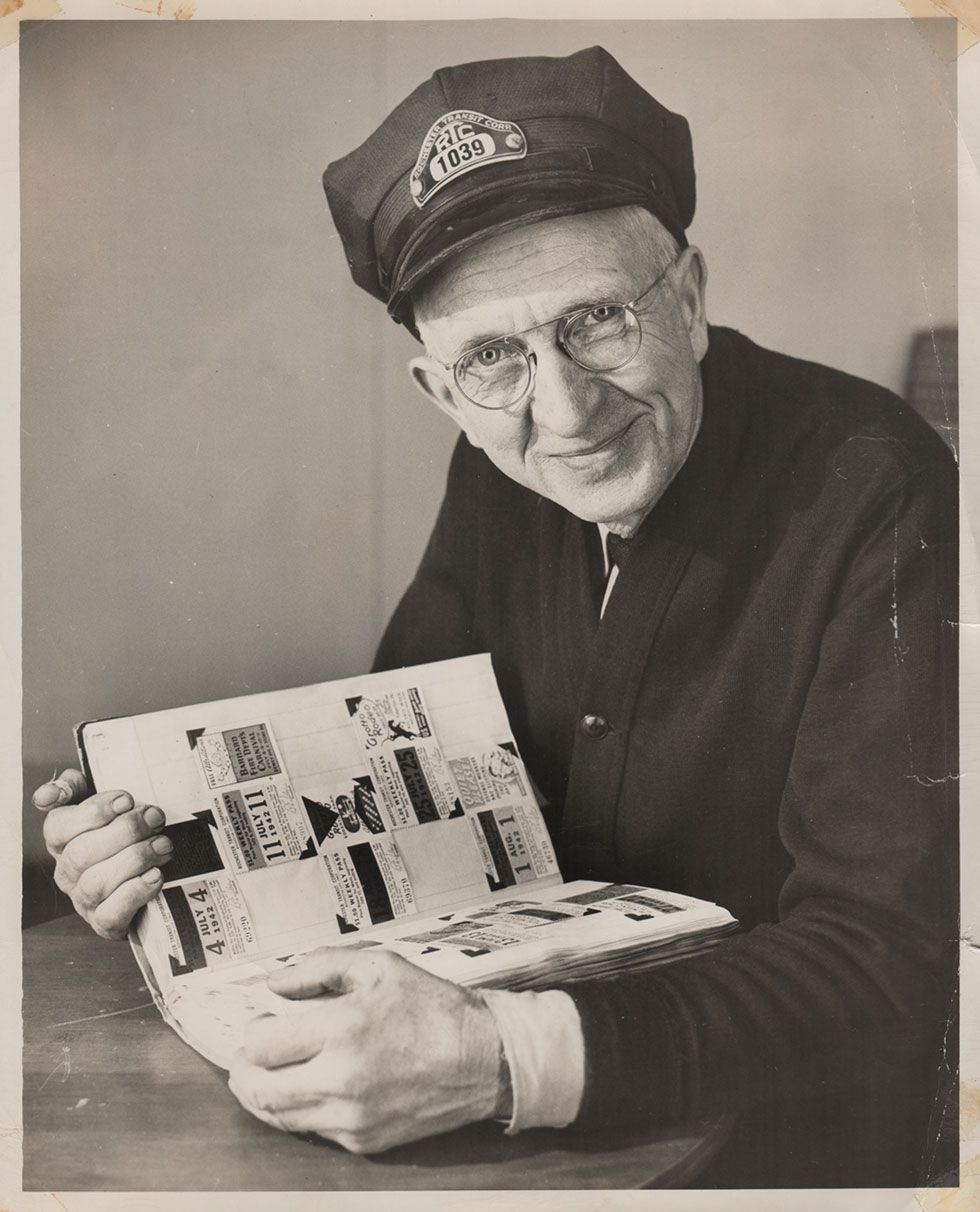This article was scraped from Rochester Subway. This is a blog about Rochester history and urbanism has not been published since 2017. The current owners are now publishing link spam which made me want to preserve this history.. The original article was published July 24, 2012 and can be found here.

Today marks the 48th anniversary of Rochester's 1964 "Race Riot"

. While doing a little research on the 1964 riot I stumbled upon a completely different (and lesser known) incident. This one could also be called a "race riot" and it occurred 44 years earlier, on the streets of Fairport, NY.

As I piece this story together from old newspaper articles which describe how a Rochester "colored youth" was shot and killed by a Fairport deputy, it strikes me that many of the story's details have been left out; if not by the news reporters then by the investigators or witnesses themselves. On Wednesday, October 20, 1920 chaos broke out on Main Street in Fairport after a group of young men arrived in taxicabs from Rochester's NY Central Railroad Station with intentions to "clean up the town of Fairport." But details as to why such an aggressive act would be taken upon the town of Fairport are fuzzy.
The news articles make no mention of race except when referring to the one "colored youth" who was killed, James Noey. And eyewitness accounts from police and townspeople use phrases like "Rochester youths" or "Rochester boys" as code for "black" youths. But make no mistake, this confrontation between a group of black men from Rochester, and a group of white men from Fairport was racially charged.
![Main Street in Fairport, between the Clark Building and the Town Hall, where 'Rochester colored youth' James Noey was killed during the so-called 'Fairport Riot'. [PHOTO: Rochester Herald, October 24, 1920]](https://senseofplace.dev/content/images/photos/fairport-main-street.jpg)
Here are the facts I could glean from the newspapers:
- John Maurhofer who owned a dance hall on Main St. in Fairport refused admission to several men on the Saturday night before the riot. These were probably the same "Rochester youths" charged with inciting the riot on the following Wednesday. The newspaper story is short on details as to why the Rochester youths were thrown out of the dance hall. But one article illudes to the fact that Maurhofer reprimanded one of the boys for sitting on the lap of a girl.
- That same Saturday night, Francis Bucher, a "husky lad" from Egypt, NY testified that he was standing in the dance hall doorway upstairs (maybe as security?) when some Rochester boy passed by him (on his way out of the dance hall) saying "Pardon me." Bucher said that he got out of the way but the Rochester boy "turned around and repeated the 'Pardon me' stunt several times". Seems like much is being left out here, but clearly there's bad blood brewing.
- Justin Smith who was standing in the downstairs doorway said a Rochester boy only asked him [pardon me] once and that he told the boy "there's plenty of room to get out." He said the Rochester boy then invited him to pick seven of his friends from Fairport to meet him and seven others from Rochester for a fight on Church Street. Smith says he "picked out about the biggest [Fairport boys] he could find" and when the "gang [from Rochester] saw his champions" they decided to call off the bout and returned to Rochester. But somewhere in here there is certainly a fist fight as one of the articles states that Jack "Cutie" Kauffman, a self-styled pugilist (a professional boxer?) of Rochester, was given a trouncing at the hands of one of the Fairport youths.
- Sometime after the Saturday night altercation at the dance hall the Rochester youths sent word out to the Fairport youths that they were coming back out to Fairport on Wednesday night to "clean up the town." At 8:00pm on Wednesday October 20, several taxicabs left Rochester's Central Station loaded with would-be fighters and local pugilists.
- Upon their arrival in Fairport the crowds on the street seemed too large for them to attempt anything and some of them went back for reinforcements. Five additional cabs left Rochester for Fairport at 10:00pm.
- Three of the taxicabs drove into Fairport, over the canal bridge and toward the railroad tracks when Deputy Sheriff George Brasser ordered them to stop. According to the deputy they ignored his orders and he attempted to shoot at the tires of one of the automobiles. He said he would have fired more shots at the vehicle but feared his bullets might glance off the pavement and hit bystanders on the street, of which there were now 200-300.
- Special Deputy of Fairport Clarke L. Burlingame followed George Brasser's lead and fired shots of his own at the taxicabs. One of his shots entered a cab and struck James Noey ("Rochester colored youth") in the head. Noey was sitting in the front passenger seat. Below is a photo of the taxicab with the bullet hole in the windshield.
![James Noey (described as a Rochester 'colored' youth) was sitting in the front seat of this Hudson taxicab when a bullet entered the rear of the car, passed through his head and went through the windshield. The cab was hit seven times by Sheriff's deputies. The driver was unharmed. The men in the photo are probably detectives. [PHOTO: Rochester Herald, October 24, 1920]](https://senseofplace.dev/content/images/photos/james-noey-taxi.jpg)
- Witnesses told of how several Fairport men were nearly run down by a passenger train when townsfolk lifted the crossing guard gates to allow Fairport men to pursue the fugitives. One car made the crossing but a second car had a "narrow escape from being struck."
- Coroner Thomas A. Killip's autopsy showed it was one of Deputy Burlingame's bullets that killed James Noey. The coroner found that the deputy did not have to testify for his inquisition. And in his verdict the coroner stated, "I would recommend that the grand jury pass on the legality of this shooting." No criminal charges were brought.
- The coroner also recommended that the hiring practices of taxicab companies be tightened up citing the "general lawlessness of some taxicab drivers, especially at the New York Central Station." He said the drivers "when they collected their loads of would-be fighters must have known what was the purpose of these men going to Fairport and these drivers allowed these young fellows to carry clubs into their cars.
- By October 28, sixteen Rochester youths were being held for grand jury action. Most of the suspects were from Rochester's north side near the NY Central Railroad Station including the alleged ring leader and boxer, Jack "Cutie" Kauffman. One man, Gus Blumenthal, was arrested in Syracuse (possibly after fleeing from Rochester) and charged with participating in the fight.
- By December 23, thirty of the Rochester youths were sentenced in County Court to jail time ranging from 50 days to 1 year, and ordered to pay fines of up to $500.
References:
Young Rochester Colored Man Dead in Fairport Riot

Rochester Democrat and Chronicle, 10-21-1920
Sixteen Rochester Youths Participants in Fairport Riot Held for Grand Jury Action

The Monroe County Mail, 10-28-1920
Little New Light is Shed On Events Of Street Riot At Coroner's Inquest Tuesday

The Monroe County Mail, 10-28-1920
Coroner's Verdict In Fairport Riot Case Censures Taxi Drivers

The Monroe County Mail, 11-18-1920
Thirty Young Rioters Are Sentenced to Pay Fines and Serve Various Prison Terms

The Monroe County Mail, 12-23-1920


